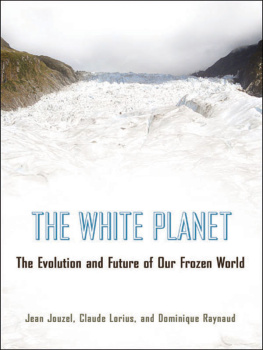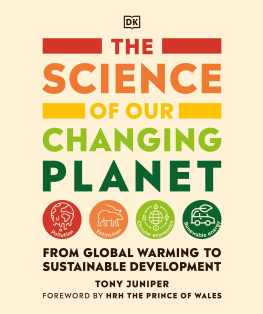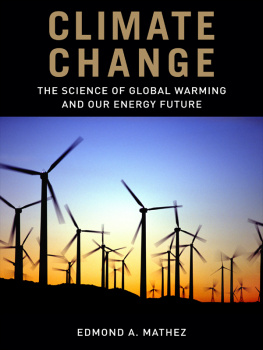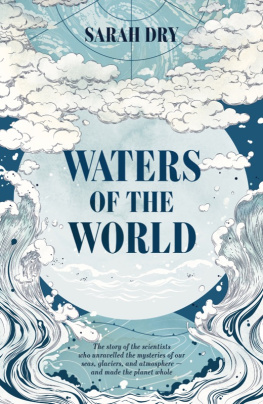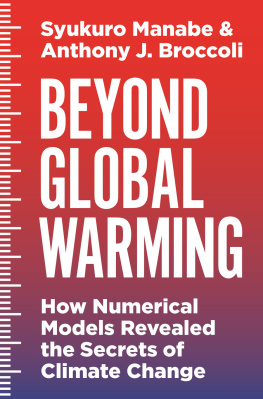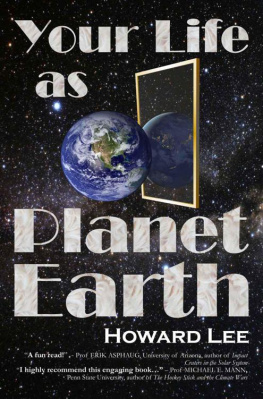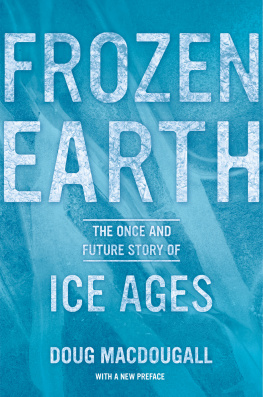
THE WHITE PLANET
THE WHITE PLANET
THE EVOLUTION AND FUTURE OF OUR FROZEN WORLD
Jean Jouzel, Claude Lorius, and Dominique Raynaud
Translated from the French by Teresa Lavender Fagan
PRINCETON UNIVERSITY PRESS
Princeton and Oxford
First published in France under the title Plante blanche, les glaces, le climat et lenvironnement Odile Jacob, 2008.
English translation, adapted and revised, copyright 2013 by Princeton University Press
Requests for permission to reproduce material from this work should be sent to Permissions, Princeton University Press
Published by Princeton University Press, 41 William Street, Princeton, New Jersey 08540 In the United Kingdom: Princeton University Press, 6 Oxford Street, Woodstock, Oxfordshire OX20 1TW
press.princeton.edu
Jacket Photograph: Fox Glacier, South Island, New Zealand. Te Wahipounamu UNESCO World Heritage Area. Cloudia Newland. Courtesy of Shutterstock.
Cartoons by Michel Creseveur
All Rights Reserved
LIBRARY OF CONGRESS CATALOGING-IN-PUBLICATION DATA
Jouzel, Jean, 1947
[Plante blanche. English]
The white planet : the evolution and future of our frozen world / Jean Jouzel, Claude Lorius, and Dominique Raynaud ; translated from the French by Teresa Lavender Fagan.
p. cm.
First published in France under the title Plante blanche, les glaces, le climat et lenvironnement, Odile Jacob, 2008.
Includes bibliographical references and index.
ISBN-13: 978-0-691-14499-3 (cloth : alk. paper)
ISBN-10: 0-691-14499-0 (cloth : alk. paper) 1. Glaciers. 2. Glaciology. 3. Climatic changes.
4. Paleoclimatology. 5. Greenhouse effect, Atmospheric. I. Lorius, Claude. II. Raynaud, Dominique. III. Title.
QC981.8.I23J6813 2013
551.31--dc23 2012028432
British Library Cataloging-in-Publication Data is available
Ouvrage publie avec le concours du Ministere francais charge de la cultureCentre national du livre.
This book has been published with support from the French Ministry of Culture / National Book Center.
This book has been composed in Garamond Premier Pro
This book is printed on recycled paper 
Printed in the United States of America
1 3 5 7 9 10 8 6 4 2
To Jean-Marc Barnola,
glaciologist and humanist, who liked so much to visit our White Planet.
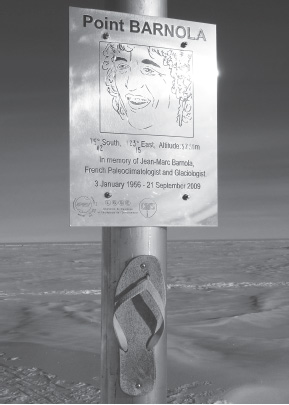
PHOTO COURTESY OF J. CHAPPELLAZ, CNRS-UJF-IPEV.
CONTENTS
PREFACE
Do you know why the land and ice in the surroundings of the North Pole are called Greenlandin French, Groenland? You might think that the name comes from an old inuk word, but Erik the Red supposedly named the island when he founded a Viking colony there in 984 A.D. Some historians claim that Erik the Red invented the term green land to entice his kinsmen to that desolate land. This is perhaps not really true, because even if Greenland seems today to be a huge white expanse, along certain fjords one can still see green fields where animals are raised. Between 984 and the fifteenth century this was the most distant fore-posts of European civilization. Scandinavians 1,500 miles from Norway built a cathedral and churches, wrote in Latin and Old Norse, wielded iron tools, herded farm animals, followed the latest European fashions in clothingand finally vanished. The stone church in Hvalsey endured; the Vikings of Greenland, who numbered five thousand in 1000, disappeared, while their neighbors the Inuits barely survived.
Around the year 800 Scandinavia was warming up, but the cultivatable lands in its mountainous regions and along its rocky coasts were too few to feed the large Viking population. On their fast-sailing ships that were capable of long voyages, the Vikings set off in search of more abundant lands. Some eventually settled under the Sicilian sun, but in the North Atlantic they founded several colonies: in the Orcades, the Shetland Islands, the Feroe Islands, in Iceland, and in Greenland. From there, the descendants of Erik the Red even tried to settle in a land they called Vinland, which today would include the coasts of Canada south of Labrador as well as Newfoundland, the Gulf of Saint Lawrence, and part of the coast of New England. But their attempts quickly failed, it seems, owing to a lack of means and men to fight the Indians. Those intrepid adventurers thus returned home to the shores of Greenland, which were more peaceful though less hospitable. Four hundred years after Erik the Red landed, only the ruins of farms where his countrymen attempted a life remained.
Today an even greater possibility of collapse threatens us because it involves the entire planet. We must turn to the icy lands to fully understand the nature and magnitude of the threat. But it is no longer a question of the ability or inability of some to react adequately to a temporary and local change in climateour current situation is unlike that of the Mayan lords who were exhausted by wars and unable to foresee the consequences for their people of repeated droughts and overexploited land.
We are dealing with a perceivable degradation of living conditions in our society that is exacerbating the crises that already exist: poverty, access to clean water and to sources of energy, migrations, geopolitical destabilization and conflicts. Subsequently, the Inuits are protesting; the polar bear, the largest living land carnivore, is threatened; and the krill, very useful little shrimp, as well as the seals and the penguins in the southern seas that eat them, seem at risk. More than a sixth of the worlds population, most of which is in Asia, lives in regions that rely on the water from snow and glaciers: if those shrink in volume that could affect the future of those regions. One hardly dares mention the consequences on tourism of the melting of the glaciers in the Alps or the Pyrenees or of a shrinking of the snow cover that might be caused by a mere increase of 2C. Our vacations would be seriously affectedbut that would be the least of our problems.
The Vikings were doomed from the beginning, Jared Diamond has written. And the petty Mayan kings were too concerned with their wars to sense any danger. Will we be able to react? The 2007 Nobel Peace Prize attributed to, Al Gore and to the Intergovernmental Panel on Climate Change (IPCC) testifies that there is a growing awareness of the threat that climate change is posing to the planet. Glaciology and glaciologists have contributed to this heightened awareness.
More than fifty years ago, in 1957, one of the authors of this book, Claude Lorius, went to Adlie Land. His intention, within the framework of the International Geophysical Year, was to explore and learn more about Antarctica. Temperatures, the thickness of the ice, snow accumulation, the advance of the glaciers: everything was new, and there was much to learn. A few years later, around 1965, a new path was opened: ice analysis enabled glaciologists to determine the temperature of the atmosphere at the time the snow had fallen. These new data were a true gold mine, which has been developed in France in collaboration with the Commissariat lEnergie Atomique (CEA) within which one of the authors of this book, Jean Jouzel, spent the greater part of his scientific career. At the Laboratoire de Glaciologie et de Gophysique de lEnvironnement (LGGE) du CNRS (Centre National de la Recherche Scientifique) in Grenoble, we analyzed the impurities contained in the ice, in particular the air bubbles that are evidence of past atmosphere, a realm that our third author, Dominique Raynaud, brought to the forefront.
Next page
